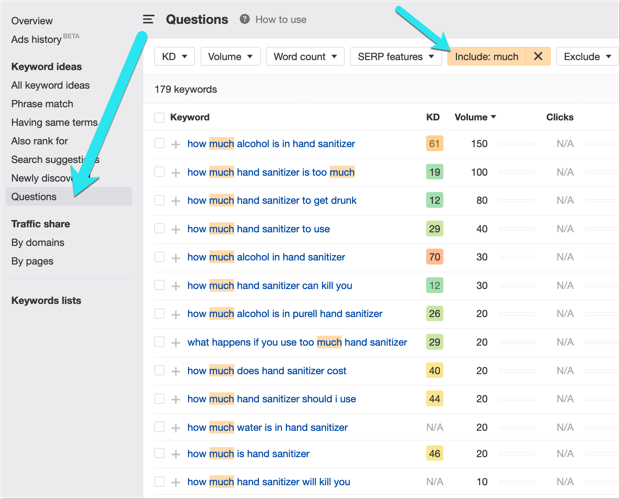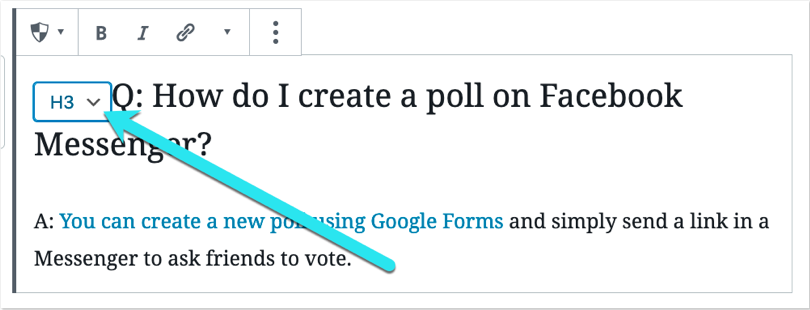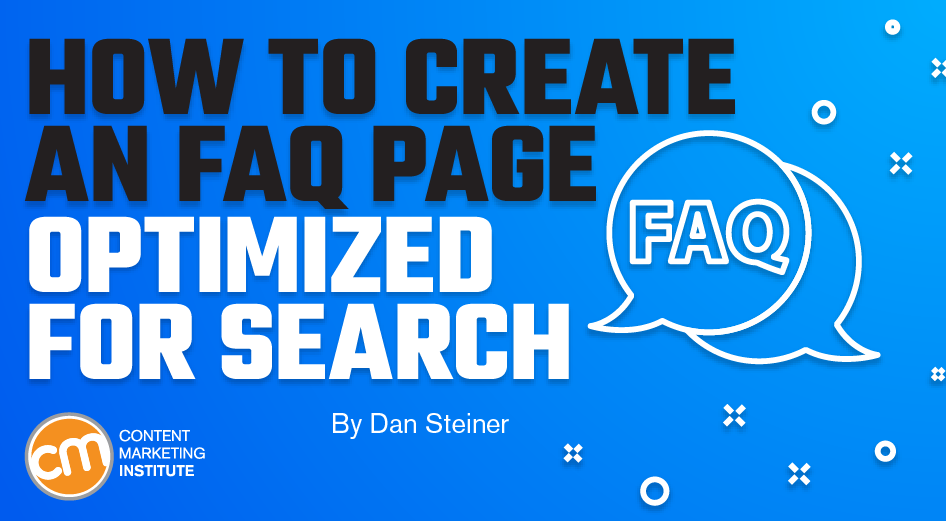
On search result pages, Google works hard to provide searchers with the questions and the answers (or links to the answers).
You usually can see the question-answer functionality integration in two areas:
- People Also Ask feature on the first page of most search engine results
- FAQ rich snippets of popular questions from the listed page

You can capture both organic search opportunities with a well-built, strategically optimized FAQ page.
A well-built FAQ page can attract organic results in Google, says @danlsteiner via @CMIContent. #SEO Click To TweetWhat is a FAQ page?
A frequently asked questions (FAQ) page is a curated list of popular questions followed by a quick answer on a topic.
FAQ pages aim to make it easier to find concise answers to niche questions. They accomplish several important goals:
- Keep your visitors browsing your site (instead of going elsewhere to find answers).
- Prevent your visitors from interrupting their buying journey to contact your customer support.
- Turn your site into the knowledge hub by making it easy to find answers.
FAQ pages also can make your site easier to find in Google by grabbing new organic placements.
Step 1: Create an SEO-driven strategy
Identifying searching trends is the key to any SEO strategy, and an FAQ page is no exception.
You need to know how your customers are wording their questions, which questions interest them most, and which question words and formats are more popular than the others.
This is the foundation of the SEO-driven FAQ page creation process.
Semantic research
The first tool to use is Text Optimizer, which uses semantic analysis to identify related concepts behind any search query. It makes it easy to break your questions into subtopics and understand your customers’ searching patterns:
Break your FAQs into related concepts with subtopics using @TextOptimizer, says @danlsteiner via @CMIContent. #tools Click To Tweet
Google Suggest
Google as-you-type suggestions provide a lot of searching insights:

To make this research easier, use Ahrefs, which extracts questions from Google Suggest results, allowing you to collect more questions. There’s an easy filter to identify questions on a similar topic or following a similar searching pattern:

Google Suggest-powered question research also is included in other marketing analytics solutions if you are looking for more data sources.
Google’s People Also Ask
Naturally, Google’s People Also Ask feature should be used as the data source as well. The Internet Marketing Ninjas tool makes it easy to collect those around your important search queries:
.@NinjasMarketing tool makes it easy to research and collect @Google’s People Also Ask results, says @danlsteiner via @CMIContent. #tools Click To Tweet
Here are even more tools to research and optimize for People Also Ask results.
Your competitors
Another source of SEO data is your competitor. It is a good idea to run your competitors’ FAQ URL through competitive intelligence tools to see which questions drive organic visibility for them.
Check out your competitors’ FAQs when building your own FAQ, says @danlsteiner via @CMIContent. #SEO Click To TweetStep 2: Organize your questions
The tools above will give you lots of data to work with, possibly more than you deem doable. But not all those questions are worth covering in your FAQ unless you want to make it unusable.
This is where proper question organization is helpful. I like using one of these spreadsheet templates as they force me to put dates on the queries, thus making me meet my own deadlines.
At this point you will need to identify:
- Main subtopics behind those questions. (See example in Text Optimizer screenshot above. These could be price-related questions, DIY questions, general questions, etc.)
- Closely related questions (that can be grouped into one). You don’t want to clutter your FAQ page answering the same question over and over.
- Questions matching various content personas. This article lists a few templates where you can attribute search queries (and questions) to the identified content personas.
- Question groups with similar search intent (i.e., questions purely to learn more on the topic, questions that may lead into a purchase, questions that revolve around your or your competitor’s brands).
This step will help you structure your future FAQ page into sections for better usability. Salesforce offers a good example of a well-structured FAQ page:

A few powerful WordPress plugins can help you organize your FAQ page in sections and subsections.
Step 3: Use an FAQ page schema
Google’s rich snippets rely heavily on the use of so-called schema or structured markup that helps search engines extract required information to enrich the search excerpt.
For FAQ rich snippets, there’s a structured markup called FAQPage schema. To make your life easier, a WordPress plugin walks you through implementing the schema on any of your pages.
With this plug-in installed, when uploading your content to WordPress, select this block to mark up your question and answer with FAQPage schema:

Another cool thing about using this plug-in is that it prompts you to mark up each question as an H2 or H3 subheading, which is what Google uses to find answers for the questions inside the People Also Ask feature. By using the plug-in, you optimize for both organic search opportunities:

HANDPICKED RELATED CONTENT:
Step 4: Add internal links inside each answer
This is an important but often overlooked step. Google shows your answers inside the rich snippet, yet they may appear so conclusive that searchers never click to your site. To overcome this, add internal links in each answer. These in-the-answer links also will be seen in organic search, so the searchers may be more inclined to click on them:

HANDPICKED RELATED CONTENT:
Step 5: Create a clickable table of contents
To make your FAQ page easier to navigate, publish an outline of major sections covered – a table of contents. If you did Step 2 successfully and created your structure based on actual searching patterns, this outline gives yet another organic search advantage – “jump-to” links, taking searchers to the part of the FAQ page that interests them most:
To make your FAQ page easier to navigate, publish an outline of major sections covered, says @danlsteiner via @CMIContent. #SEO Click To Tweet
Keap is a great example of a well-organized FAQ page that also includes a clickable table of contents making the page easy to navigate (highlight the TOC in the left column to make the questions appear):

To accomplish this, you create an anchor link for each question. In the table of contents, you hyperlink each question to its corresponding anchor link. Here’s a detailed guide on how to create anchor links in WordPress.
Help your content get discovered more frequently
Google is always coming up with new sections and elements making search results richer and more interactive. If you maintain a flexible SEO strategy and adapt your tactics to the newest changes, your site will be among the first to enjoy extra organic search visibility.
Capturing more organic opportunities with a well-structured and well-optimized FAQ section is easy and likely to help you achieve many more goals, including better user engagement and more conversions.
HANDPICKED RELATED CONTENT:
Note: Tools mentioned in the article come from the author. If you have other suggestions, including your company’s, please add in the comments.
Cover image by Joseph Kalinowski/Content Marketing Institute

